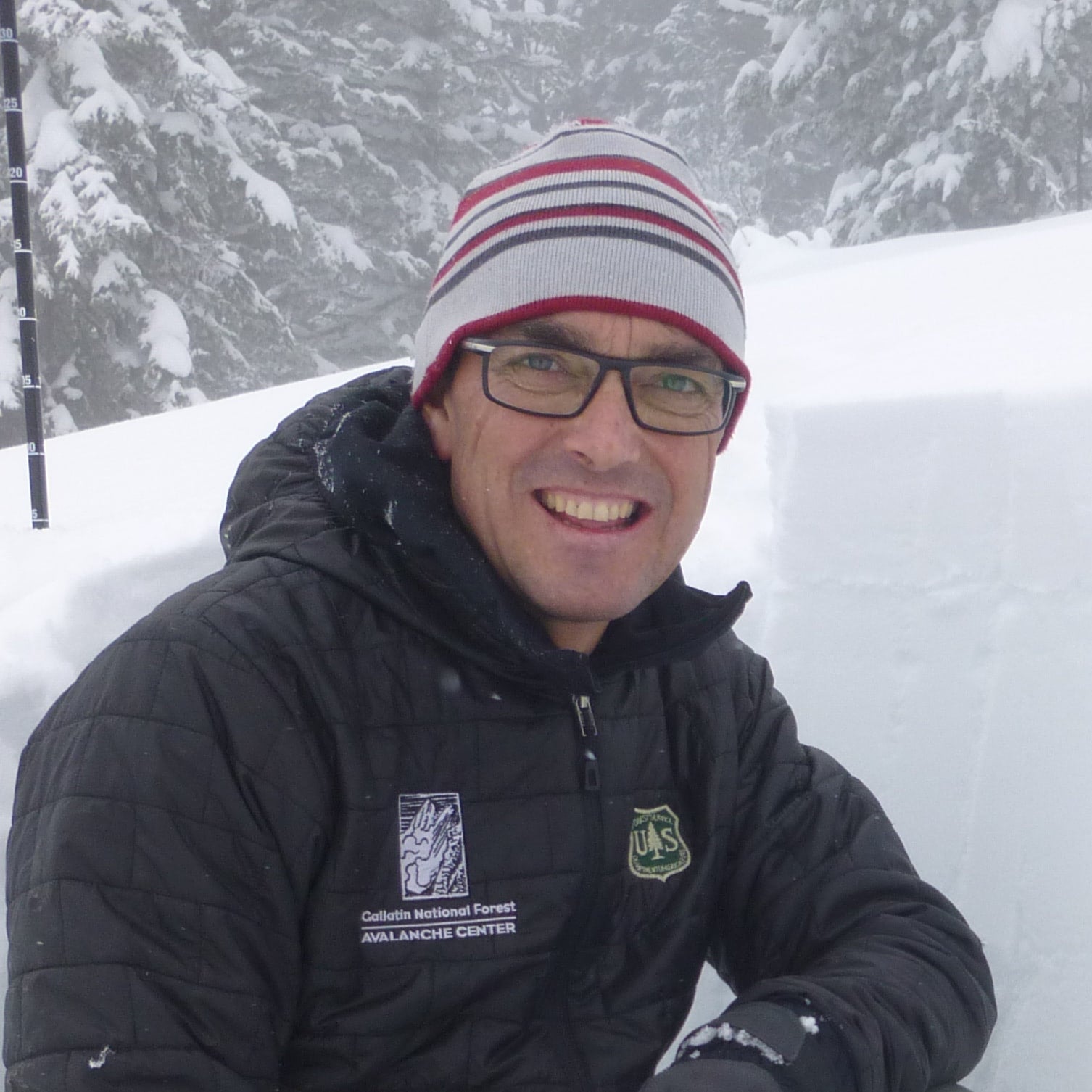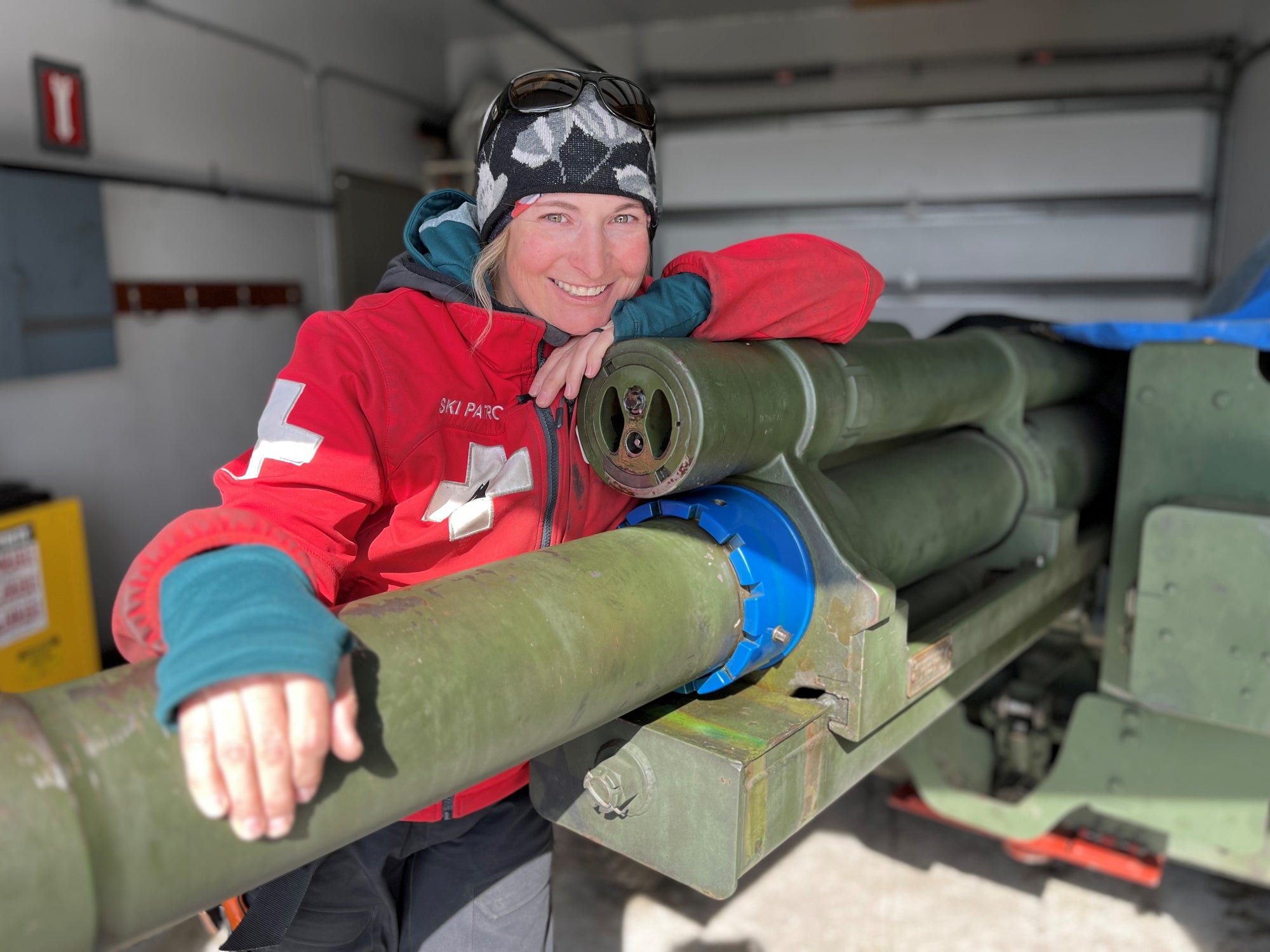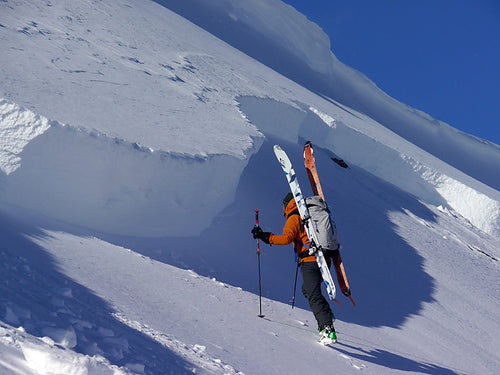Doug Chabot has been an avalanche forecaster since before the internet existed. The longtime director of Montana’s Gallatin National Avalanche Center, he will retire from the position in April 2024.
[Note: This is part three of a series called The Invisible Hands of Avalanche Work, a five-part series that’s brought to you by Flylow and the American Avalanche Association. The point of these stories is to get to know some of the hard-working, behind-the-scenes folks who conduct the critical avalanche work that keeps the rest of us safe.]
Back in the 1990s, avalanche forecasts were issued by a phone hotline, most backcountry skiers used telemark gear, and you could spend all day in the backcountry without crossing a single track. Times have changed, clearly. More and more users have ventured beyond the gates, avalanche education has become widespread, and the way forecasts are created and distributed has changed drastically (see: the internet and social media).
Doug Chabot has been there through all of it. The former Bridger Bowl ski patroller joined Montana’s Gallatin National Avalanche Center as a part-time forecaster in 1995; he became director of the organization in 2000. This coming spring, after 24 years at the helm, Chabot will step down as director to focus his energy on guiding climbing and skiing clients all over the world, working as an avalanche consultant and search and rescue volunteer, and running the nonprofit organization he co-founded, Iqra Fund, which seeks to support education for girls in Pakistan. We spoke to Chabot at home in Bozeman, Montana, about storytelling, residual risk, and what he’s hanging his hat on.

Doug Chabot
The internet was coming along. We had to figure out how to get our forecasts from a phone hotline onto a website. We were the first avalanche center to put a photograph on an advisory. I remember thinking: Can we somehow insert a photo into this text? That was revolutionary.
Backcountry participation has increased every year. We’re seeing more and more users, but the average number of avalanche fatalities has stayed relatively the same. That’s great news. The lessons still need to be learned, but we’re doing a good job at teaching them.
Years ago, we’d run these free classes in the snowmobile world and just a handful of people would show up. You’re like, is this even worth it? The answer is yes, it is. That’s how all things start. Soon, it got busier. Eventually, we had a population of snowmobilers who were carrying gear and knew how to do a rescue. Education clearly keeps people alive.
A forecasting day starts at your computer at 4 in the morning. You’re looking at weather, observations, you’re making the forecast for the day. You’re telling people what to look out for, what they can expect, and what to do. After that, you go into the field and collect as much data as you can.

We’re forecasting for ranges, not individual slopes. We put out a forecast for an entire range, but people aren’t skiing an entire range. They’re skiing a slope. So, our job is to arm them with enough information to know what to look for, to have a general idea of what our concern is. But then that slope demands its own assessment. There’s no way around that.
Avalanches get triggered because we don’t always know what’s under our feet. There’s only one way to know what’s under our feet, and that’s to put a shovel in the snow. There’s no shortcut. If you’re skiing lines and you’re not putting a shovel in the snow, you’re operating with less information than you could be.
Nothing is binary. It’s fuzzy and nuanced. The snowpack is not as stable as I want. But it’s not unstable. What’s my risk tolerance? What are the consequences of my actions? That’s the fun part for me. Having this adventure, I get to make some of these calls. If I don’t want to make these calls, I should probably avoid avalanche terrain or stay in the ski area.
Residual risk is real. If we are choosing to continually put ourselves in avalanche terrain, the risk is never zero.
We don’t have weather stations everywhere. And we have exactly four avalanche forecasters in the field. So we rely heavily on public observations. Someone coming back saying there were wind slabs low on the slope helps us. We need your eyes on the ground.

I’m a stickler for storytelling. The point of an avalanche forecast is to give people information they can remember. If you can turn that into a story—I went here, I saw this—that helps people remember. I aim to keep our advisories jargon free.
I’ve always hung my hat on when you’re avalanche forecasting, you want to speak to the user with the exact same tone and information that you’d give your best friend who called you up the night before and said, ‘I’m going out, what should I look for?’
We’re good at telling people what the problem is. But that’s only part of it. We have to give people advice on what our expectations are, what we want them to do. Should you avoid avalanche terrain? Should you dig a pit and see if you can find a buried weak layer? Knowing the problem is just the first step.
Once I’m retired as a forecaster, I’m still going to go out and look at the snow a certain way. My brain is wired for it. The difference will be when I’m out there, it’ll be me making a call for me and my partners. Versus me making the call for all of southwest Montana. That pressure is OK, though. It keeps me on my toes.





